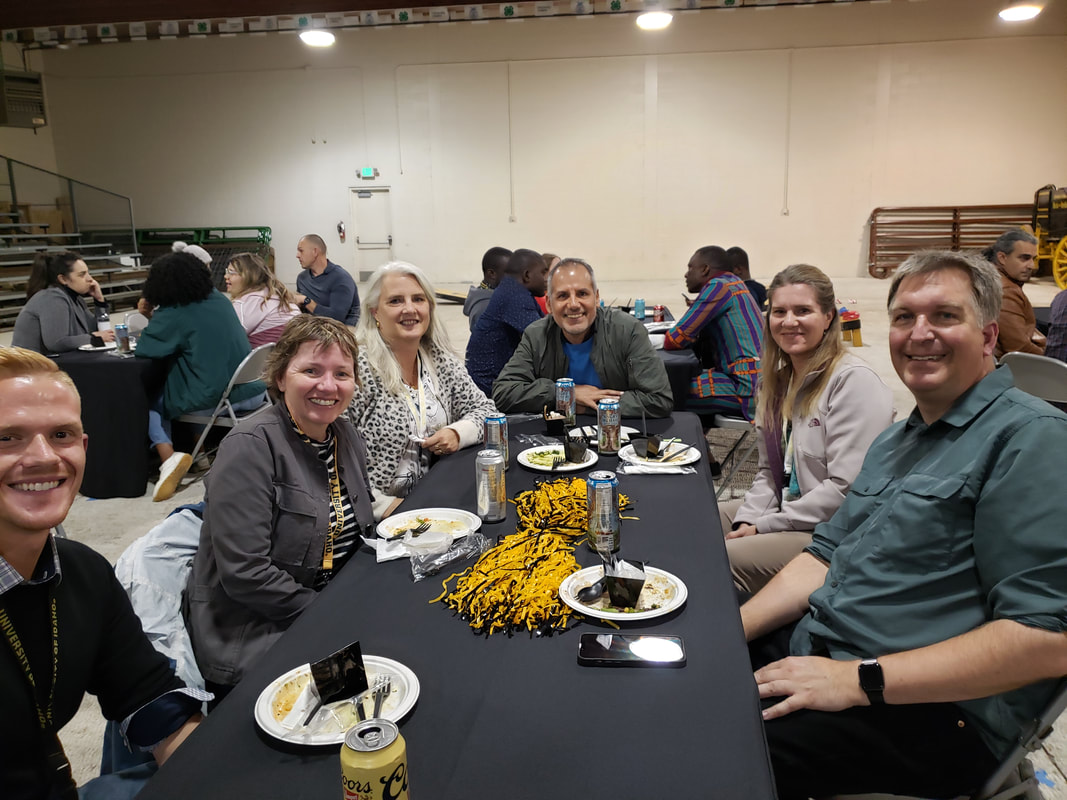|
Aedes aegypti and Anopheles stephensi larvae were provisioned with m-cresol purple (0.02%) to stain the high pH anterior portion of the larval mosquito midgut. Aedes aegypti Anopheles stephensi dorsal Anopheles stephensi ventral
0 Comments
Thanks to our wonderful 2023 KEYS student, Adrian Matzkin (center), for his efforts this summer! Also thanks to Brendan Riske (left) for serving as Adrian's mentor.
Had a great time last night introducing kids to some of our insects at the Richard B. Wilson STEAM night!
A couple of years ago Robert at Robert Sanders Fine Glass Sculptures crafted this awesome custom glass figure of a bloodfed Ae. aegypti.
Another great year in Idaho for the 2022 BVBD course. I look forward to next year's course. You can learn more about the course here.
With our record rainfall in Tucson this monsoon season we have seen an increase in the number of insects that are doing extremely well this year. While the increased numbers of butterflies has been a sight to behold this summer, the increase in mosquitoes is considerably less welcome! So if mosquitoes are ruining your evenings here are a few things you can do about it.
First, know your enemy! There are four main pest mosquitoes that are likely feeding on you in Tucson, the ankle biter, Aedes aegypti, the West Nile vectors, Culex quinquefasciatus and Culex tarsalis and the malaria mosquito, Anopheles freeborni. Although these mosquitoes tend to feed more at dawn and dusk, they are capable of feeding on you at most times of the day and night. You can find a wealth of information on these mosquitoes from the University of Arizona Cooperative Extension at https://extension.arizona.edu/mosquito-resources. So if you have mosquitoes in your backyard how can you prevent them from feeding on you? First, mosquitoes need standing water in which to lay their eggs. However, the amount of water needed can be quite small as long as it doesn’t dry out before the mosquitoes develop from eggs to adults, a process that takes about nine days. So your first goal is to find these potential breeding sites and dump them out. Common breeding sites in your back yard can include pots, bird baths, clogged gutters, children’s toys, pet dishes, etc. One place that mosquito larvae like to hide is in the saucers under large pots, that can hold water that is not easily visible. Once you identify a breeding site, just dump the water out and the larvae will quickly perish. Do this once a week and you should eliminate these breeding sites. What if you have a larger body of water that can’t be dumped, such as a pool or pond? Well first, if the water is circulating you are fine. Mosquito larvae need stagnant water to develop in. However, if you have a large area of standing water you can treat it with the larvicide called Bti, or Bacillus thuringiensis subspecies israelensis, which can be commonly found at stores as mosquito dunks or granules. This larvicide only work in the high pH environment found in the stomach of larval mosquitoes and is thus completely safe for most other organisms, including people, pets, birds and mammals. If one of your neighbors is breeding mosquitoes you will need to rely on mosquito repellents, the most effective of which is DEET. The CDC also recommends picaridin and oil of lemon eucalyptus as potential repellents, although the protective effects do not tend to last as long. Another option is to wear pyrethroid impregnated clothing, which can effectively deter the mosquitoes looking to make a meal out of you. Why do we care? In addition to being a nuisance, mosquitoes can transmit human pathogens, including West Nile Encephalitis and St. Louis Encephalitis viruses here in Arizona. They are also important vectors of dog heartworm. So stay safe, enjoy the monsoon rains, and don’t let mosquitoes ruin your time outside! |
AuthorDr. Michael Riehle is an expert on mosquito biology and the pathogens they transmit Archives
April 2024
|
















 RSS Feed
RSS Feed

